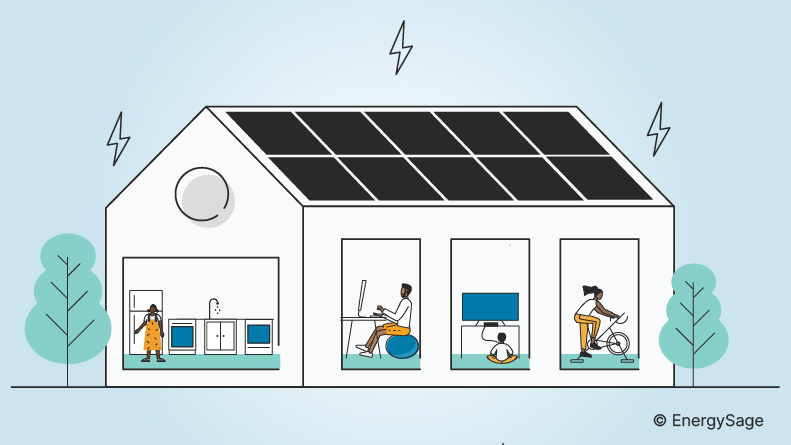How Many Solar Panels Do I Need For My Home In 2024? – EnergySage Blog
You can calculate how many solar panels you need by dividing your yearly electricity usage by your area’s production ratio and then dividing that number by the power output of your solar panels. Let’s break that down a bit:
Calculating how many solar panels you’ll need to meet your energy needs depends on several factors. The easiest way to find out how many panels you’ll need is to use our Solar Calculator. When you put in your address and estimated monthly power bill, we’ll do all of the math for you so that you can make an informed decision. If you’d like to do those calculations, we’ve explained our formula below to help.
The formula we used to estimate the number of solar panels you need to power your home depends on these critical factors. Here are the assumptions we made and how we did our math:
Annual electricity usage
Your annual electricity usage is the energy you use in your home over a year. Measured in kilowatt-hours (kWh), this number is influenced by the appliances in your home that use electricity and how often you use them. Refrigerators, air conditioning units, small kitchen appliances, lights, chargers, and more all use electricity.
According to the U.S. Energy Information Administration (EIA), the average American household uses 10,791 kWh of electricity per year (or about 900 kWh per month), so we’ll use that number as the ideal solar panel system or solar array size, which would mean you could offset 100% of your electricity usage and utility bill with solar panels (in practice, it’s not this neat, but bear with us here). To get a more exact number based on how much energy you use, check last year’s electric bills to determine your average electricity consumption. Once you have that number, plug it into the equations below.
Solar panel wattage
Also known as a solar panel’s power rating, panel wattage is the electricity output of a specific solar panel under ideal conditions. Wattage is measured in watts (W), and most solar panels fall in the 300 – 400+ W of power range. We’ll use 400-watt panels in these calculations because 390-400 W is the most quoted capacity range on the EnergySage Marketplace, according to our latest Intel Report.
Production ratios
A solar panel system’s production ratio is its estimated energy output over time (kWh) to its actual system size (W). These numbers are rarely 1:1 – depending on how many hours of sunlight your system will get (primarily based on your geographic location), your production ratio will change accordingly.
For example, a 10 kW system that produces 14 kWh of electricity in a year has a production ratio of 1.4 (14/10 = 1.4) – this is an entirely realistic production ratio to see out in the real world. In the U.S., production ratios are usually between 1.1 and 1.6, so we’ll use those two numbers as the high and low estimates for our calculation.


